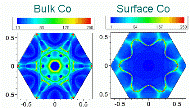Department of Physics and Astronomy: Publications and Other Research
Date of this Version
October 2006
Abstract
The cross section for bond breaking at the site of a dissociative temporary negative ion state through the dissociative electron attachment process can be considerably enhanced by the presence of a second longer-lived temporary negative ion state elsewhere in the molecule, even one quite remote from the first. In a series of chloroalkenes possessing both C–Cl and C=C bonds separated by various distances, we show that the cross sections are determined by the lifetime of the lower anion state created by the mixing of the anion states of these two moieties, with the wave function’s coefficients giving the probability that the electron is located at the dissociative site. Furthermore, the lifetime of the composite anion state can be expressed in terms of these same coefficients and the lifetimes of the unmixed resonances. We also discuss how these results may give insight into the means by which strand breaks are induced in DNA by the attachment of slow electrons. © 2006 American Institute of Physics.


Comments
Published by American Institute of Physics. J. Chem. Physics 125, 154309 (2006). ©2006 American Institute of Physics. Permission to use. http://jcp.aip.org/.